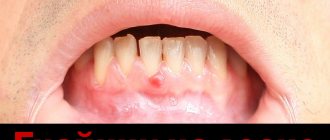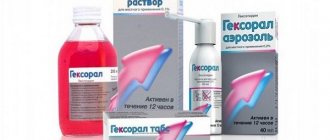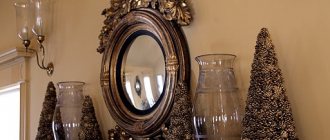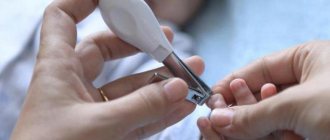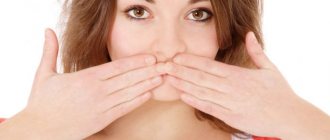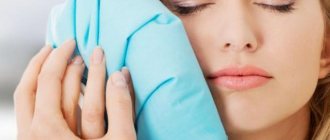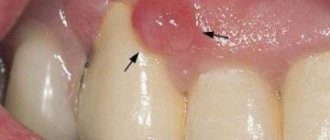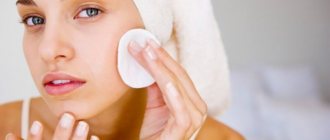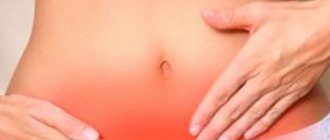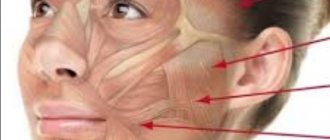Red spots on the face are a very unaesthetic phenomenon that can significantly ruin a person’s life. When they appear, many girls and women try to disguise them. However, first of all it is necessary to identify the cause of their appearance.
Red spots on the face indicate serious pathologies in the body
After all, they can signal serious pathologies in the body that require immediate treatment. And first of all, it is necessary to treat the underlying disease, and only then eliminate the red spots on the face.
Reason for appearance
Red spots on the face can be single or spread over the entire face. They can periodically appear all over the skin or be localized in certain areas, and also have different origins and character.
Red spots on the face may appear as a result of the following reasons:
- Heredity and structural features of the skin. Very often they appear on dry, dehydrated and irritated skin.
- With a rush of blood to the face. In this case, they appear as a result of active physical activity, stress or severe tension, with high blood pressure, when there is a sharp change in air temperature, after taking certain medications, or as a result of menopause.
- After overheating. Typically, the skin turns red after spending a long time in the sun, visiting a solarium, or heat stroke.
- When exposed to cold on the skin, as well as during general hypothermia of the body.
- As a result of allergies. Allergic reactions can occur when eating certain foods, also when using cosmetics, in the spring, when everything is blooming and plant pollen is spreading, in case of sensitivity to animal hair, when treated with certain medications. As a result of an allergic reaction, in addition to redness and flaking of the skin, itching, swelling, sneezing and watery eyes may occur.
- If red spots appear on the face, then a skin disease can be suspected. Thus, redness and peeling can signal the development of viral lichen, demodicosis, psoriasis, rosacea, and eczema.
- Severe dryness and dehydration. Sometimes the skin may become red, flaky and irritated due to severe dryness and dehydration.
- The appearance of herpes. Dryness and redness of some areas of the epidermis may indicate the onset of herpes.
- Excessive activity of the sebaceous glands. Overactivity of the sebaceous glands provokes increased synthesis of sebum (sebum), resulting in the development of acne, red spots on the face and acne.
- Deficiency of certain vitamins and poor diet. Vitamin deficiency and deficiency of nutrients lead to poor condition of the skin, including its redness.
- If red spots appear on the face, this may indicate some pathologies of the internal organs. Most often these are malfunctions of the hormonal system, diseases of the cardiovascular system, pathologies of the liver and gall bladder, diseases of the kidneys and digestive system, venous insufficiency, hypertension.
- Sometimes areas of redness can serve as indicators in the diagnosis of ailments. For example:
- spots located under the eyes and in the upper part of the cheeks indicate that a person has hypertension;
- red spots on the face and swelling indicate diseases of the renal system;
- their appearance around the mouth indicates diseases of the liver and gall bladder;
- if the spot appears on the tip of the nose, then you need to consult a cardiologist, in this case there may be heart disease;
- if they appear all over the face, then perhaps we are talking about rosacea, since this is a chronic phenomenon that is constantly present on the face.
How to remove red spots on the face
In order to remove red spots on the face, get recommendations on possible treatment options from a dermatologist. If necessary, the doctor can write a prescription for the purchase of:
- antiallergic ointment;
- ointments with glucocorticosteroids;
- antimycotic ointments;
- hydrocortisone ointment;
- antiviral ointment;
- antifungal creams (for example, ketoconazole);
- medicinal lotions with chamomile, calendula, and tar.
In addition, you may be recommended antihistamines, sedatives, and vitamin complexes as additional therapeutic measures. Prescribed medications should be used in strict accordance with the doctor's recommendations and instructions for use. To improve subcutaneous blood circulation, cosmetic procedures should be used: vitamin masks, clay therapy, massage, cryomassage, electrocoagulation. This will help remove red spots on your face.
You can use alternative traditional medicine. For damaged facial skin, to remove raspberry spots and spots, it is recommended to drink decoctions or tinctures using birch buds. Since this product can only be used in the spring season, you can make homemade skin-soothing masks from the following ingredients:
- Recipe No. 1. Grind 15 g of oatmeal, pour in a few drops of lemon juice. Apply the mixture to damaged skin and wait until it dries, then rinse with clean water or a damp cloth.
- Recipe No. 2. Mix an egg yolk, a drop of olive oil, two tablespoons of thick honey and a spoonful of good quality heavy cream. Lubricate your skin with the resulting mixture twice a day.
- Recipe No. 3. Take baby cream, add a small amount of chamomile decoction and olive oil; Rub into skin until completely absorbed.
Symptoms that accompany redness
If your face is covered with red spots, then you should take a closer look at them. Additional sensations will help you understand the nature and cause of the rash.
So, by feeling we can say that if the spots:
- hurt, then perhaps we are talking about viral lichen;
- if they are hot, then – increased blood pressure;
- sneezing, itching and swelling – allergies;
- if they peel, then this is the result of exposure to frost or ultraviolet radiation;
- Itching and flaking is a skin disease.
By appearance:
- protrude above the skin and are inflamed - pimple ripening;
- small and frequent – irritation or allergies;
- weeping – skin disease (eczema);
- large, dry and flaky – exposure to ultraviolet radiation or cold;
- red - white - the result of hypothermia or frostbite;
- bluish color – diseases of internal organs;
- rough and dry – dehydration (dehydration);
- large and swollen - kidney disease or allergies.
By location:
- on the nose - heart disease;
- on the cheeks – rosacea and rosacea;
- on the chin - disruptions in the hormonal system;
- under the eyes - blood pressure;
- around or near the mouth - the gallbladder or liver.
The most dangerous red rashes are the weeping ones. Very quickly they turn into eczema and begin to fester if timely treatment is not provided. It is best to consult a dermatologist so as not to guess about the origin of the spots. He will prescribe the appropriate tests and provide the correct analysis.
Eczema or rosacea on the face
Rosacea is the so-called rosacea, which is most often localized on the cheeks, neck and back. With this disease, the skin first turns red, resembling a single conglomerate, and then pimples and blackheads appear on it. The symptoms described above need urgent correction, because if time is lost, the disease will become chronic. It is especially dangerous to self-medicate and use various creams and ointments without the knowledge of a doctor.
Much of the redness on the face is associated with poor lifestyle and bad habits. So:
- smoking and frequent drinking of alcoholic beverages contribute to the dilation of blood vessels, which leads to the appearance of stars and blood vessels all over the face; over time, red spots will become constant companions of nicotine and alcohol lovers;
- stress can also cause redness on the face, since the body reacts differently to the psycho-emotional state, they can appear at times of acute stress.
The cause of this phenomenon may be infectious diseases. For example, red rashes may accompany:
- chicken pox;
- streptoderma;
- rubella;
- scarlet fever;
- measles.
Spots appear even during viral and bacterial infections. In this case, they quickly spread to the entire face and even the body.
And also the result of fungal infection:
- candidiasis;
- demodicosis (damage to the epidermis by a specific type of mite);
- pityriasis rosea;
- ringworm.
Red rashes and peeling
Children's skin is sensitive to various types of irritants. If the spots are accompanied by peeling, the cause may be:
- wind;
- water;
- Sun;
- cosmetical tools;
- cold.
To eliminate the problem, it is necessary to remove the irritant that caused the redness and peeling. You can soften the skin with cream after first treating problem areas with chamomile infusion. If the problem does not go away, you should contact a specialist.
Therapeutic measures
The method of treatment depends on the specific ailment that caused the redness.
- If these are skin diseases (psoriasis or eczema), then a whole range of treatment is needed: oral tablets and external ointments.
- If the cause of redness is an allergy, then antihistamines and diet therapy are necessary.
- In case of stress, unstable psycho-emotional state, as well as nervous tension, tranquilizers and a course of psychotherapy are prescribed.
- Redness may be caused by seborrhea. In this case, drugs with ketoconazole are needed.
- If redness on the face is caused by diseases of the internal organs, then first of all it is necessary to cure a certain disease.
Measles
Pathogen: measles virus (Polinosa morbillarum)
Method of transmission: airborne. The unusually contagious and highly volatile measles virus can not only be transmitted through direct contact with a sick person, but also, for example, spread through ventilation pipes, infecting people in neighboring apartments.
Immunity: lifelong. It is produced either after an illness or after vaccination. For children whose mothers had measles or were vaccinated against it, immunity to measles is transmitted in utero and persists for the first 6-12 months of life.
Incubation period: 9-21 days.
Infectious period: From the last two days of the incubation period until the 5th day of rash/
Manifestations: fever, cough, hoarseness, conjunctivitis. On the 3-5th day of illness, bright, large, sometimes merging spots appear on the face, while the temperature remains. On the 2nd day, the rash appears on the torso, on the 3rd - on the limbs. Approximately on the fourth day from the moment of onset, the rashes begin to fade away in the same order as they appeared.
Treatment: symptomatic therapy: drinking plenty of fluids, darkened room (since conjunctivitis is accompanied by photophobia), antipyretics. Children under 6 years of age are prescribed antibiotics to prevent bacterial infection. Thanks to vaccination, measles has now become a fairly rare disease.
Drug treatment
First of all, you should know that only a doctor should prescribe medications depending on the diagnosis. This article is for informational purposes only and in no case can serve as a treatment guide.
To treat redness, both internal and external medications are prescribed. An approximate treatment regimen is as follows:
- External ointments and creams. These include Metrogyl, Rosex, Ovante.
- Vitamin and mineral complexes (in tablets and injections).
- For psycho-emotional conditions - tranquilizers.
- For allergies - antihistamines.
- For oily seborrhea of the face - zinc ointment and tablets with ketoconazole.
- For viral lichen - Clotrimazole, Flucinar, Acyclovir.
- For psoriasis – Cyclosporine, salicylic ointment, Acitretin.
- For demodicosis - Permethrin ointment, Aversect.
- For rosacea - Trichopolum, Minocycline, Skinoren gel.
- For dermatitis - Solcoseryl, zinc ointment, Indomethacin.
- For eczema - Lorinden, Tavegil, Flucinar, Furacilin.
During treatment, regardless of the reason, doctors advise avoiding taking other medications (not included in the course of treatment) and drinking alcohol.
The use of medications always gives 100% results, since they are aimed at eliminating the cause, and not at eliminating the effect. During treatment, you must be under the supervision of a doctor and inform him about how the treatment is going.
An additional means of treatment can be cosmetic procedures that have a beneficial effect on subcutaneous microcirculation:
- paraffin therapy and clay therapy;
- different types of massage;
- electrocoagulation;
- peeling with fruit acids;
- vitamin masks;
- photorejuvenation;
- cryomassage.
As a result of proper treatment, the spots will gradually fade and completely disappear once the underlying cause is eliminated. In addition, all procedures performed in the salon not only eliminate redness, but also improve the condition of the skin.
You can remove redness on your face with some simple steps:
- Adjust your diet. It is important to exclude from the diet foods that can cause allergies (citrus fruits, some types of nuts, marinades, chocolate).
- Include more fruits and vegetables in your diet, especially those grown in the region where you grew up.
- Take vitamin and mineral complexes. Nowadays, nutrition cannot always be balanced, since the fast pace of life does not allow us to be thoughtful about our nutrition, so taking vitamin complexes is mandatory.
- Take good care of your skin. After all, almost all offices have air conditioners that greatly dry out the epidermis.
- Also avoid severe overheating and damage to the skin during a beach holiday. Ultraviolet radiation contributes to dry and irritated skin. This may lead to facial flushing.
- Use only high-quality cosmetics. Do not frequently powder your face or apply a thick layer of foundation. This clogs pores and contributes to skin inflammation, and no inflammation comes without redness.
- Apply moisturizing cosmetics regularly, since red spots are often the result of dehydration of the skin.
- Wipe your face with infusions of medicinal herbs that relieve inflammation and irritation on the face. Such plants include: chamomile, yarrow, celandine, St. John's wort.
- Infusions of medicinal herbs can be added to homemade masks, and they can also be used as compresses.
- Do not wash your face with hot water or take hot baths. Hot water contributes to irritation, peeling and dryness of the skin.
- Use scrubs and peels at home with caution. Scrubs with large abrasive particles can injure the skin. As a result, microscopic wounds and cracks appear, which are manifested by redness of the epidermis.
The child has redness in the form of dots
New parents examine their baby daily and become nervous if something unknown is discovered.
Often we have to deal with the appearance of red spots on the baby’s tender cheeks. This causes anxiety for parents, but it is quite possible to get rid of the problem. Characteristic rashes can occur for various reasons. Based on them, an effective treatment method is selected.
All spots are divided into 2 main categories: those that do not require specific treatment and those that do need it.
Causes of red dots
Small pimples are a common problem. Sometimes children are born with them, or they begin to appear after 2 weeks of life. Such dots can be of different shades - red, white dots, etc. Usually the nature of their occurrence is harmless, but the problem cannot be ignored.
According to doctors, dots often appear as a result of clogged sebaceous glands.
Tiny white specks located on the surface of the nose and cheeks are called milia or millet specks. They can easily be confused with acne. They appear due to unformed sebaceous ducts. Usually they do not upset the baby and go away on their own within 2 months.
After birth, the baby’s body gradually gets rid of maternal hormones. For the first time, organs begin to independently regulate all body systems. This transition process can affect the appearance of red dot formations.
Parents should be very careful with the areas where the rash occurs. By scraping off spots, a dangerous infection can be introduced into the body.
Pediatricians recommend using calendula-based ointments to treat areas.
We exclude allergens
Often such formations are mistaken for diathesis or an allergic reaction. In practice, the occurrence of allergies is accompanied by itching, rashes all over the body, coughing, sneezing, loose bowel movements and severe anxiety.
To prevent allergies, you need to carefully select the newborn’s menu, monitor the mother’s diet, and avoid using irritating cosmetics and household chemicals. Sometimes sensitive facial skin reacts to even the most harmless hygiene products.
It is worth considering that the baby’s skin can react to an unfavorable environment. To save your child from this kind of irritation, you need to monitor his health while bathing. To relieve symptoms, you can add potassium permanganate, infusions based on calendula, oak bark and chamomile to the water.
Spots in the first days of life
If changes occur in the first week of a child's life, this may indicate toxic erythema. The appearance of red dots in a baby is manifested as a result of hereditary burden, consumption of harmful foods, etc.
The redness flakes, but with appropriate treatment it disappears in just 2 days. Rashes can be normal or pathological.
If the rash begins in the mouth and then spreads over the entire surface of the body, transforming into bulky, flabby blisters, a rash of this nature may indicate Ritter's disease. Body temperature may be normal.
Carefully! If the rash is not treated, harmless symptoms can threaten infection with staphylococcus, streptococcus or Pseudomonas aeruginosa.
The appearance of congenital pemphigus spots is accompanied by unformed nails. To completely get rid of symptoms requires long-term antibacterial therapy with collagenase, as well as taking vitamins A and E.
If the rash is accompanied by anxiety, disturbances in sleep patterns, bowel movements or colic, the symptoms may indicate the appearance of dysbiosis. Redness is quite common among newborns, but treatment is needed to get rid of it.
Pediatricians prescribe an extensive stool test and prescribe medications to restore intestinal microflora.
What to do
To get rid of red dots on the face of a newborn, you need to follow some simple rules.
Necessary:
- Adjust your diet. Eliminate foods that cause stains from the mother’s diet;
- Carefully approach the issue of facial hygiene, namely: wash the baby in the morning and evening;
- Do not wrap or undress the child;
- Do not try to squeeze out stains;
- Bath the baby only in boiled water at room temperature, using auxiliary means;
- Do not use tinctures containing alcohol for processing.
Practice shows that even the most significant skin rashes are temporary. Symptoms go away without treatment. The spots disappear gradually and leave no traces behind.
What products are not recommended to be used?
The best measure to prevent acne in infants is to comply with basic hygiene measures, as well as the diet of mother and baby. If the baby is bottle-fed, the selected formula should suit the body as closely as possible without causing any cause for concern.
For the treatment of rashes it is not recommended to use:
- Oils and ointments with a fatty consistency;
- Alcohol solutions;
- Hormonal drugs;
- Adsorbents or lactic acid bacteria;
- Antihistamines;
- Antibiotics;
- Creams and gels intended for the treatment of adults.
:
Despite the fact that in most cases the appearance of red dots is absolutely harmless, the problem cannot be ignored. Treatment measures also depend on exactly how the red dots appear, so pediatricians strongly advise parents not to self-medicate!
Source: //1litso.ru/krasnye-tochki-na-lice-u-grudnichka.html
Some useful tips
If red spots often appear on the face and have become chronic, then you should completely reconsider your lifestyle:
- get rid of bad habits: smoking and alcohol addiction;
- avoid hypothermia and sudden changes in temperature;
- eat right;
- avoid stress and nervous tension;
- avoid serious physical activity, try to distribute it wisely.
Sometimes it can be very difficult to break bad habits that have accumulated over the years. However, this is a necessary solution, because if you don’t change anything in your life, then the problem cannot be eliminated. This requires a lot of effort and willpower. If the cause of the phenomenon lies in diseases of the body (internal organs, infectious, skin), then a visit to a doctor and appropriate treatment is necessary.
Psychological factors
Redness often appears for psychological reasons. These include:
- stress;
- neuroses;
- depression;
- excessive emotional stress;
- excitement before important events;
- fears, uncertainty and others.
The redness may be continuous or in the form of large, uneven spots. A distinctive feature is that there are no traces of structural changes in the skin at the site of inflammation.
It is worth noting that even a healthy child’s face may periodically turn red and spots may appear due to excessive excitement or mental stress.
This is how the human body’s defensive reactions manifest themselves: when it gets excited and blushes, it seems more friendly, thereby reducing the potential danger.
Reason #1: genetic predisposition to the appearance of vascular spots
There are different types of spider veins on a child's face. Photos showing the development of the disease can be seen both in real life and on the Internet.
A common cause of rosacea is genetic predisposition. If one of the child's relatives suffered from an excessive number of red dots, the likelihood of blood stars appearing increases.
It is important to note that the genetic predisposition to rosacea comes from the gene pool, both from parents and other relatives.
What to do with local redness
Treatment of vascular pathologies and infectious diseases should be carried out under the supervision of a specialist on an outpatient basis. If the doctor determines that there are no medical problems, you can try to eliminate the defect yourself. Beauty salons offer several options for treating redness on the skin. Among the most effective:
- cryodestruction;
- ozone therapy;
- electrocoagulation;
- laser exposure;
- diathermocoagulation.
At home, whitening masks, lotions and compresses are effective.
The choice of method depends on the cause of the stains. Electrocoagulation and diathermocoagulation will help remove the effects of rosacea. The affected areas of the vessels are removed with an electrical impulse or a hair electrode. Cryodestruction allows you to quickly and painlessly get rid of angiomas. Sclerosing therapy can also help remove vascular tumors. Adhesive substances are injected into damaged vessels to promote the growth of collagen fibers. Red acne is treated with mechanical or chemical peels, as well as laser resurfacing.
Mechanical resurfacing will help deal with red spots on the skin.
